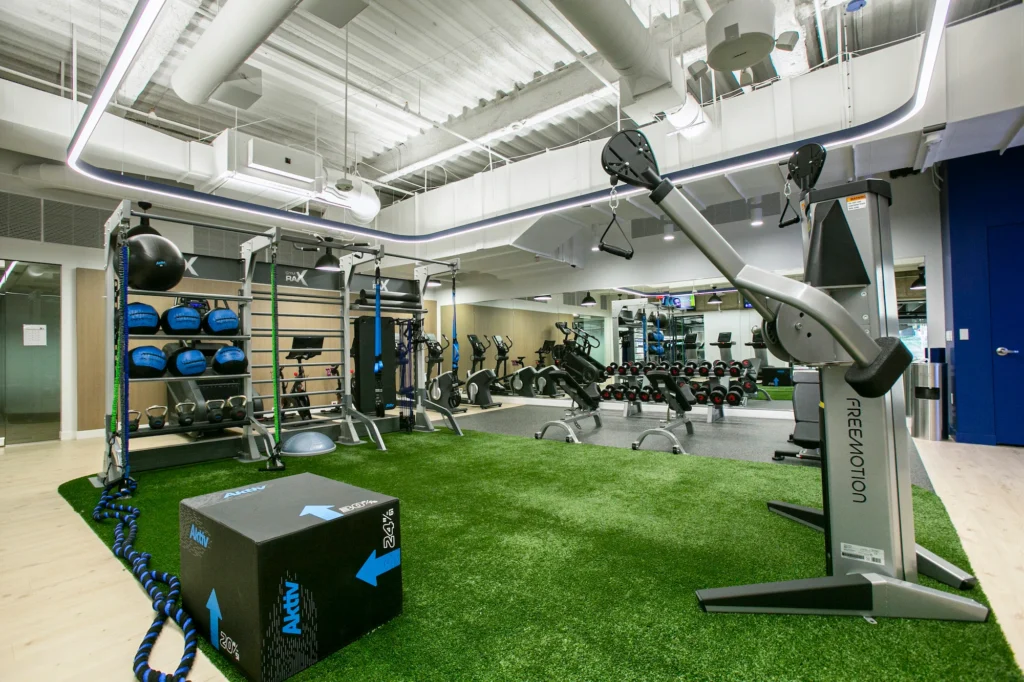Aktiv CEO Bryan Green on The Future of Fitness Facility Design

Green believes fitness operators must utilize physical space in creative ways and lean into technology to win with modern consumers
This article is part of ATN’s DISRUPT 2023 video series, which features key conversations with executives from the most successful brands in fitness and wellness. To watch more videos, click here
As trends come and go, and consumer preferences shift, the challenge for gym designers is to create spaces that not only meet current demands but also remain adaptable to future changes.
To explore the intricate world of gym design and fitness equipment, Aktiv Solutions founder and CEO Bryan Green joined DISRUPT 2023 presented by Athletech News to discuss how gyms and other fitness facilities can design spaces and select equipment that meet customer needs.
“I’ve been in the gym design space for my entire career,” Green said. “So, I’m particularly passionate about it, and everything we do at Aktiv really is about designing experience.”
“Aktiv Solutions was born out of necessity,” he added. “Traditional manufacturers excel in cardio and strength, but there were gaps in the fulfillment process. Many emerging fitness categories lacked suitable equipment in commercial spaces without significant customization.”
Green shed light on the practical challenges that inspired Aktiv to take action. It was Green’s own wife, an aerial yoga instructor, who faced the frustration of the lack of suitable equipment in commercial spaces for her fitness regimen. This experience prompted Green to jump headfirst into the world of gym design.
“We’re very careful about what we bring to the market,” Green noted. “We’re not adding value if we’re not creating something to make a difference.”

Use Space to Your Advantage
The guiding principle behind Aktiv’s approach is to focus on optimizing gym spaces. It’s not just about adding more equipment; it’s about providing solutions that enhance safety, functionality, and the effective utilization of space.
One of the most prominent challenges in the fitness industry is its trend-centric nature. While some operators excel at staying current with these trends, others struggle to keep pace.
In Green’s view, the dynamic nature of the fitness business makes it crucial for operators to avoid overcommitting to a single trend. Instead, they should focus on preserving and optimizing space. This entails creating spaces that not only cater to current trends but also offer flexibility to accommodate future changes and a variety of fitness modalities.

Go Beyond Pure Fitness Offerings
Diversification is a key element in staying relevant and meeting the diverse needs of gym-goers. Green emphasized that operators should balance their offerings and incorporate modalities beyond traditional exercise.
“Balance is key. It’s not just about exercise. It’s about offering well-being experiences. Incorporating recovery-based modalities, hot and cold treatments, and myofascial work is essential,” Green said. “Operators must understand that you can’t just mix everything together. Design is crucial in balancing high-energy and low-energy zones, creating a journey that supports well-being.”
With the fitness industry extending its reach beyond traditional gym spaces, Green discussed the evolution of gym design in various settings.
“The emerging markets, such as hotels, residential real estate, and corporate wellness, offer the convenience of exercise,” he says. “Smaller, more tailored spaces are becoming immersive and impactful.”
Integrating Tech
The conversation with Aktiv’s CEO also touched upon the crucial role of technology in modern gym design.
“Technology is essential because guidance is crucial. Digital platforms provide guidance and personalization. They help users navigate their fitness journey,” Green says.
While live coaching is valuable, it may not always be economically feasible. Hence, digital platforms offer an accessible and cost-effective means of guiding individuals through their fitness journeys. The integration of technology into gym spaces, as Green emphasized, should be purposeful and seamless. The objective is to maximize the benefits users can derive from these platforms, ensuring that they have a guided and personalized fitness experience.
“The gym of the future won’t look radically different, but it will become more sophisticated and technology-driven,” Green predicts. “Personalized workouts through biometrics and real-time feedback are on the horizon.”



